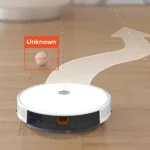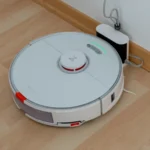Are you tired of constantly having to clean your floors manually? Smart vacuum cleaners are a true blessing for anyone who wants to keep their home tidy without putting in too much effort. But did you know that regular maintenance of your smart vacuum cleaner is just as important as its initial purchase? It’s not just about convenience or cost savings, it’s about ensuring that your smart vacuum cleaner performs at its best, providing you with efficient cleaning and a healthier home environment. In this article, we’ll explore the many benefits of scheduling regular maintenance for your smart vacuum cleaner, as well as offer some helpful tips to keep it in tip-top shape.
The Importance of Regular Maintenance
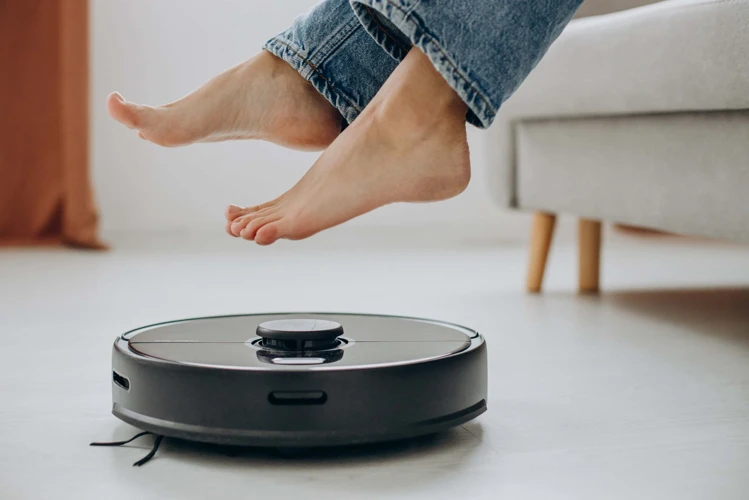
Regular maintenance is the foundation for ensuring that your smart vacuum cleaner runs smoothly and efficiently throughout its lifespan. Many people are now embracing the convenience of smart vacuums, but few understand the importance of scheduling regular upkeep to keep them running in tip-top shape. Regular maintenance will not only increase the lifespan of your smart vacuum cleaner, but also improve its cleaning performance, and create a healthier home environment. It’s important to note that failure to carry out routine maintenance can result in decreased efficiency and even cause your smart vacuum to malfunction. In this article, we’ll explore the benefits of regular maintenance for your smart vacuum cleaner, the components that need regular cleaning, how often you should perform maintenance, and also some DIY maintenance tips. If you’re encountering issues with your smart vacuum cleaner, check out our troubleshooting guide here.
1. Increased Lifespan
Regular maintenance of smart vacuum cleaners is essential to ensure their longevity. By ignoring regular maintenance, you may shorten the lifespan of your smart vacuum cleaner. Regular maintenance helps to increase the lifespan of your device because it ensures that the device is operating correctly.
One of the most critical benefits of regular maintenance is increasing the lifespan of your smart vacuum cleaner. You invest a lot of money in buying a smart vacuum cleaner, and it is in your best interest to maintain it properly. A smart vacuum cleaner with regular maintenance can last up to 10 years compared to one that is not maintained, which may only last up to 2-3 years.
Regular maintenance such as cleaning or replacing filters, cleaning brushes and rollers, and having a dustbin that is properly emptied is necessary. Cleaning or replacing filters regularly, for instance, is essential because it prevents clogging and ensures that the vacuum cleaner performs optimally. Clogged filters can negatively impact the efficiency of the device, leading to additional strain on the motor, which can result in a shorter lifespan.
Similarly, cleaning brushes and rollers is essential because they get caked with hair, dirt, and debris. This can also impact the performance of the smart vacuum cleaner by preventing the brushes and rollers from rotating or moving freely, which can damage the motor over time. Regular maintenance, which includes cleaning the sensors and wheels and checking for debris, can also prevent the device from overheating, which can reduce lifespan.
In conclusion, regular maintenance is essential to ensure the longevity of smart vacuum cleaners. By avoiding regular maintenance, you could be shortening the lifespan of your device. To learn more about maintaining your smart vacuum cleaner, check out our article on cleaning or replacing filters or properly emptying the dustbin.
2. Improved Cleaning Performance
One of the most significant benefits of scheduling regular maintenance for your smart vacuum cleaner is the improved cleaning performance. A vacuum cleaner with clean filters and brushes can pick up more dirt and debris from your floors, improving its efficiency and overall performance.
Over time, dirt and dust can accumulate in the filters, making it more difficult for your smart vacuum cleaner to suck up debris from your floors. By cleaning or replacing the filters regularly, you can ensure that the suction power remains strong, allowing the vacuum cleaner to do its job effectively. Additionally, cleaning brushes and rollers will ensure that they can continue rotating properly, without being impeded by tangled debris. Check our guide on how to clean smart vacuum brushes.
Regular maintenance of your smart vacuum cleaner’s sensors and wheels is also important for improved cleaning performance. Dust and debris can accumulate on the sensors, causing them to malfunction, and the wheels can become clogged with dirt, limiting their movement. By regularly cleaning these components, you can ensure that the vacuum cleaner operates smoothly and covers all areas of your home. Check our guide on how to clean smart vacuum sensors.
Another factor that can affect your smart vacuum cleaner’s performance is the state of the dustbin. If the dustbin is full, the vacuum cleaner may not be able to pick up more dirt and may even leave behind debris on your floor. By regularly emptying and cleaning the dustbin, you can ensure that the vacuum cleaner has enough space to collect more dust and debris. Check our guide on bagless vs bagged smart vacuum disposal for more information on how to dispose of the collected debris.
Scheduling regular maintenance for your smart vacuum cleaner has numerous benefits, and improved cleaning performance is certainly one of the most important. Regular cleaning of filters, brushes and rollers, sensors and wheels, and the dustbin can keep your vacuum cleaner operating at its best, ensuring that your home stays cleaner and healthier. If you’re looking to take your smart vacuum cleaner’s performance to the next level, check out our guide on the top smart vacuum accessories that can enhance your experience.
3. Healthier Home
As you use a smart vacuum cleaner to clean your home, you may not realize that it has an impact on the health of your environment. Regular maintenance of your smart vacuum cleaner helps to create a healthier living space for you and your family.
The following are some benefits of maintaining your smart vacuum cleaner:
- Elimination of Dust and Allergens: A malfunctioning smart vacuum cleaner may not be able to effectively remove dust, dirt, and allergens that accumulate on your floor. This could lead to the spread of these particles in the air, causing respiratory issues and allergies. Regular maintenance ensures that your vacuum is working optimally and removes all traces of these particles from your home.
- Decreased Chance of Mold Growth: Moisture and dust accumulation provide the perfect breeding ground for mold to develop. A smart vacuum cleaner that is not maintained can spread dust particles that promote mold growth. Regular maintenance eradicates dust accumulation and ensures that your home is less likely to have a mold problem.
- Improved Air Quality: Clean surfaces and well-functioning vacuum components make for an improved air quality in your home. With regular maintenance, your smart vacuum cleaner can remove all dust particles from your floors, reducing the amount that is spread in the air. This leads to fresher and cleaner air in your home.
In addition to the above benefits, regular maintenance of your smart vacuum cleaner prevents unpleasant odors from emanating from the machine. This ensures that your home smells fresher and cleaner, making it a better environment for both you and your family. Don’t neglect the importance of maintaining your smart vacuum cleaner, as it is key to keeping your home healthy and clean.
The Components of a Smart Vacuum Cleaner that Require Maintenance
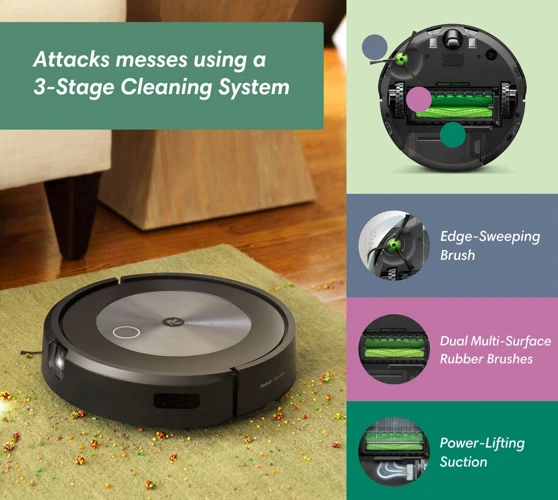
As amazing as smart vacuums are, they are not maintenance-free. Like any other appliance, they require regular upkeep to keep running smoothly and effectively. Not maintaining your vacuum can not only lead to reduced performance, but it can also cause damage to its components. To ensure your smart vacuum cleaner continues working its best for years to come, it’s essential to understand the parts that require maintenance. Let’s take a closer look at the various components of a smart vacuum cleaner that need attention and care.
1. Filters
When it comes to maintaining your smart vacuum cleaner, one of the crucial components that requires regular attention is the filter. Different types of filters can be used depending on the smart vacuum cleaner’s model, but the primary function of a filter is to trap dust, dirt, and other debris present in the air.
The filter’s purpose is to ensure that air that is released back into your home after cleaning is free from any particles or allergens that could cause harm to your health. While some filters need replacements after a specific time, others are washable and reusable. Below is a breakdown of some filters and how to take care of them:
| Type of Filter | Cleaning Frequency | Cleaning Method |
|---|---|---|
| HEPA Filters | Daily | Use a brush or a soft cloth to clean the filter. Rinse the filter with water and allow it to dry thoroughly before placing it back into the vacuum cleaner. |
| Pre-Filters | Weekly | Remove the filter and tap it gently to remove any dust and debris. Wash the filter in warm water and mild detergent then allow it to dry completely before placing it back into the vacuum cleaner. |
| Carbon Filters | Monthly | Replace the carbon filter with a new one. Carbon filters cannot be washed nor reused. |
Keeping your filters clean is crucial, as it ensures the vacuum cleaner’s efficiency and effectiveness in cleaning your home while protecting your health from any allergens present. Don’t forget to check the manufacturer’s instructions for specific cleaning instructions and recommendations.
2. Brushes and Rollers
Maintaining the brushes and rollers of your smart vacuum cleaner is crucial to ensure proper cleaning performance. These components are responsible for picking up dirt, dust, and debris from your floors and carpets. Over time, they can become clogged with hair, fibers, and other particles, which can result in reduced suction power or even damage to the vacuum cleaner.
Table: Components of Brushes and Rollers that Require Maintenance
| Component | Maintenance Required | Frequency of Maintenance |
|---|---|---|
| Bristles on brushes | Removal of hair, fibers, and debris | Weekly |
| Roller bearings | Lubrication or replacement if damaged | Monthly |
| Brush belts | Checking for wear and tear, and replacement if necessary | Quarterly |
To maintain the brushes and rollers of your smart vacuum cleaner, it is important to follow a regular cleaning routine. Here are some DIY tips:
1. Cleaning Bristles on Brushes: Use a pair of scissors or a comb to gently remove any hair or debris tangled in the bristles. Make sure to switch off the device and remove the brush from the vacuum cleaner before cleaning.
2. Lubrication or Replacement of Roller Bearings: Over time, the roller bearings may become dry or damaged, reducing the efficiency of your vacuum cleaner. To prevent this, lubricate them with a small amount of oil or replace them if they are damaged.
3. Checking Brush Belts: Check the condition of the brush belts regularly and replace them if they show signs of wear and tear. This will ensure that the brushes and rollers of your vacuum cleaner are properly functioning.
While DIY maintenance can help prolong the life of your vacuum cleaner, it is also recommended to seek professional help for more complex maintenance needs. A trusted professional can inspect and clean the components thoroughly, replace any damaged parts, and perform software updates to ensure optimal performance.
Maintaining your smart vacuum cleaner’s brushes and rollers is essential for ensuring it functions effectively and for prolonging its lifespan. So, make sure to establish a regular cleaning routine and seek professional help when needed.
3. Sensors and Wheels
Ensuring that the sensors and wheels of your smart vacuum cleaner are well-maintained is crucial to its overall performance. Here are some key steps to maintaining these components:
- Clean the sensors: Sensors are what guides the vacuum cleaner during operation. Dust, debris, or pet hair can accumulate on the sensors over time, causing them to malfunction. To clean them, use a soft, dry cloth or a cotton swab. Gently wipe the sensors with the cloth or swab to remove any build-up.
- Check the wheels: The wheels on your smart vacuum cleaner can pick up dirt, hair, or other debris from your floors. This can cause them to malfunction and affect the performance of your vacuum cleaner. To prevent this, regularly check the wheels for any debris and clean them with a damp cloth if necessary.
- Inspect for damage: Occasionally, the sensors or wheels on your smart vacuum cleaner can become damaged or worn down. If this happens, the vacuum may not work as well, if at all. Regularly inspect the sensors and wheels for any signs of damage or wear and replace them as needed.
By following these maintenance steps, you can ensure that your smart vacuum cleaner is functioning properly and effectively cleaning your home. Don’t neglect the sensors and wheels – they play a vital role in the overall performance of your device.
How Often should You Maintain Your Smart Vacuum Cleaner?
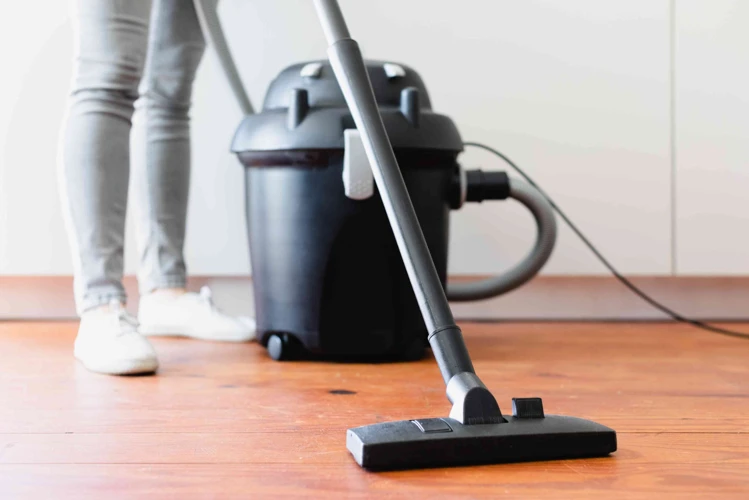
One of the most important questions you may have as a smart vacuum cleaner owner is how often you should be conducting maintenance on your device. Ensuring that you’re maintaining your smart vacuum cleaner on a regular basis can help prolong its lifespan and keep it running smoothly. But with so many different components to address, figuring out a regular timetable can be a bit perplexing. Thankfully, we’ve got you covered with an overview of the different types of maintenance and how often you should tackle them. So let’s dive into the details and explore the ideal maintenance frequency for your smart vacuum cleaner.
1. Daily Maintenance
Regular maintenance is essential for keeping your smart vacuum cleaner in good working condition. By performing daily maintenance, you can ensure that your vacuum is always ready for cleaning when you need it. Here are some daily maintenance tasks to keep in mind:
1. Empty the dustbin: After each use, make sure to empty the dustbin. This will prevent the vacuum from becoming clogged and ensure that it is ready for the next use.
2. Check the filters: Check the filters for any signs of dirt or damage. If the filters are dirty, clean or replace them as needed. Keeping the filters clean will improve the vacuum’s suction power and prevent dust and debris from escaping.
3. Check the brushes and rollers: Check the brushes and rollers for any tangled hair or debris. Remove any obstructions to ensure that they can rotate freely and effectively pick up debris from the floor.
4. Inspect the sensors and wheels: Inspect the sensors and wheels for any signs of dirt or damage. Clean the sensors with a soft, dry cloth and remove any debris from the wheels to ensure smooth movement.
5. Remove any obstacles: Make sure that there are no obstacles or hazards in the room that may interfere with the vacuum’s movement. This will prevent the vacuum from getting stuck or causing damage to furniture or other items in the room.
By performing these daily maintenance tasks, you can ensure that your smart vacuum cleaner is always ready to clean your home effectively and efficiently. Remember that regular maintenance is essential for ensuring that your vacuum lasts as long as possible and continues to perform at its best.
2. Weekly Maintenance
Regular weekly maintenance of your smart vacuum cleaner is essential for proper functioning and avoiding any potential damages or malfunctions in the future. Here are some tasks you should include in your weekly maintenance routine:
- Clean the Brushes and Rollers: The brushes and rollers of your smart vacuum cleaner are responsible for cleaning the floors and carpets. They can easily become clogged with dust, hair, and debris. To ensure optimal cleaning performance, remove the brush and roller from the machine, and clean them thoroughly using a toothbrush or any other small brush to get rid of any tangles or clumps of hair.
- Clean the Sensors and Wheels: To ensure your smart vacuum cleaner moves around your house without any obstacles, it is important to clean the sensors and wheels weekly. You can use a damp cloth to clean the sensors and wheels gently, ensuring there is no dust, debris or hair on them that could interfere with their functioning.
- Check the Filters: Check the filters of your smart vacuum cleaner to ensure they are clean and functioning correctly. Depending on the model, your vacuum may have a pre-filter or HEPA filter. You can clean your filters either by removing them and washing them with cold water or by replacing them regularly.
- Empty the Dustbin: The dustbin of your smart vacuum cleaner can fill up quickly, especially if you have pets or live in a dusty environment. Make sure to empty it after every use to prevent your vacuum from losing suction power.
- Check for Any Debris: While cleaning your machine, check for any debris, such as string or thread that might have tangled up around the brushes, rollers, or wheels. Removing this debris will help extend the life of your smart vacuum cleaner.
By incorporating these weekly maintenance tasks into your routine, you can help to maximize the performance and extend the lifespan of your smart vacuum cleaner. Taking care of your machine will ensure that it continues to provide you with a healthy and clean environment by effectively removing dust, dirt, and other allergens from your home.
3. Monthly Maintenance
Monthly maintenance is crucial in keeping your smart vacuum cleaner in top shape. During this time, it’s important to give your device a thorough cleaning and check its components for any signs of wear and tear. Here are the steps to follow for monthly maintenance:
| Tasks | Description |
|---|---|
| Clean the dustbin | Empty and clean the dustbin thoroughly to prevent any buildup of debris. Use a microfiber cloth or a soft brush to remove any dirt and dust that may have settled on the walls and edges of the bin. Make sure to also wipe down the sensors located inside the dustbin. |
| Inspect the brushes and rollers | Check the brushes and rollers for any signs of wear and tear. If they are worn out or damaged, replace them with new ones. Use a pair of scissors to cut away any tangled hair or debris that may have accumulated around the brush or roller. |
| Check the sensors and wheels | Inspect the sensors and wheels for any signs of debris or dirt buildup. Use a clean and dry cloth to wipe down the sensors and wheels. Make sure to also check for any damage to the sensors or wheels and replace them if necessary. |
| Clean the filters | Remove the filters and clean them thoroughly. If they are disposable, replace them with new ones. Rinse the filters under running water or use a cleaning solution to remove any dirt or debris that may have accumulated on them. |
| Check for software updates | Make sure to check for any available software updates for your device. This will ensure that your smart vacuum cleaner is running on the latest firmware, and any bugs or issues have been addressed. |
By following these monthly maintenance tips, you can ensure that your smart vacuum cleaner stays in top condition, thereby extending its lifespan and improving its cleaning efficacy. Remember that a well-maintained smart vacuum cleaner will not only keep your floors clean, but also contribute to a healthier home environment for you and your family.
DIY Maintenance Tips for Smart Vacuum Cleaners
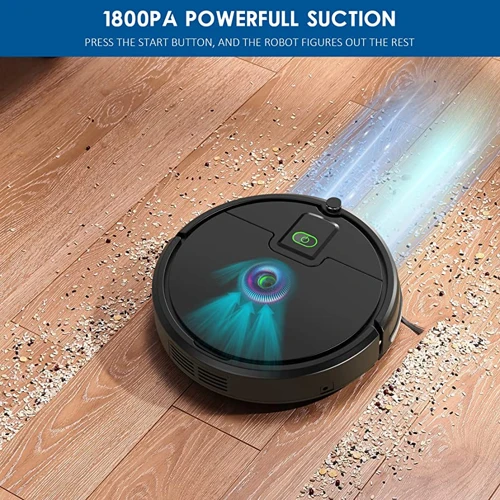
Taking care of your smart vacuum cleaner is not only easy but can also save you money in the long run. With regular DIY maintenance, you can ensure that your vacuum cleaner is working at its optimum level, while also prolonging its lifespan. Here are some tips and tricks that you can do yourself to keep your smart vacuum cleaner in top condition, without the need to bring it in for professional maintenance every time.
1. Cleaning Filters
Regular maintenance of the filters in your smart vacuum cleaner is crucial in ensuring that it continues to function at its best. Filters trap dirt and debris, preventing it from being released back into the air. Over time, these filters can become clogged, reducing the suction power of your vacuum and making it less effective. This can lead to dust and other allergens being released back into your home, affecting air quality.
To ensure that the filters in your smart vacuum cleaner are working as they should, you should clean them regularly. But how exactly should you go about this? Here are some tips:
| Step | Procedure |
|---|---|
| 1 | Remove the filter from the smart vacuum cleaner. Refer to the user manual if you are unsure how to do this. |
| 2 | Tap the filter lightly to remove any loose debris. Be careful not to damage the filter during this process. |
| 3 | Rinse the filter under running water. Make sure to use water that is not too hot or too cold, as this could damage the filter. |
| 4 | Use a mild detergent to clean the filter thoroughly. Make sure to read the instructions on the detergent to ensure that it is safe to use on the filter. |
| 5 | Rinse the filter again under running water to remove any detergent residue. |
| 6 | Shake off any excess water from the filter and leave it to dry completely before putting it back in the smart vacuum cleaner. Avoid using a hair dryer or any other heating device to dry the filter, as this could cause damage. |
By following these simple maintenance steps, you can ensure that your smart vacuum cleaner continues to perform as it should, keeping your home clean and healthy. Remember to clean your filters at least once a month, or more frequently if you use your vacuum cleaner often.
2. Cleaning Brushes and Rollers
Keeping the brushes and rollers of your smart vacuum cleaner clean is crucial to ensuring that it can deliver optimal cleaning performance. Over time, dirt and debris can build up on these components, causing them to become less effective at dislodging particles from your floors and carpets. Here are some tips for cleaning your smart vacuum cleaner’s brushes and rollers:
- Turn off and unplug your vacuum cleaner: To avoid any accidents while cleaning the brushes and rollers, turn off your smart vacuum cleaner and unplug it from the wall socket.
- Remove the brushes and rollers: Most smart vacuum cleaners have a mechanism that allows you to easily remove the brushes and rollers. Refer to the user manual to locate this mechanism and remove the components. If you’re having trouble, don’t hesitate to reach out to the manufacturer’s customer support for assistance.
- Remove any debris: Once you have removed the brushes and rollers from your smart vacuum cleaner, use a pair of scissors or your fingers to remove any hair, string, or other debris that has wrapped around them. Be very careful not to scratch or damage the components while doing this.
- Clean the brushes and rollers: After removing the large debris, soak the brushes and rollers in warm water for about 10 minutes to loosen and dissolve any remaining dirt or grime. Alternatively, you can spray them with a cleaning solution and wipe them down with a soft cloth. Make sure to reach all the nooks and crannies of the components to ensure a thorough cleaning.
- Dry thoroughly and reassemble: Once the brushes and rollers are clean, use a clean rag or towel to dry them off completely. Make sure that they are completely dry before reassembling them back into your smart vacuum cleaner.
- Regularly check for wear and tear: As you clean the brushes and rollers, inspect them for any signs of wear and tear that may require replacement. If you notice that the components are frayed, cracked, or otherwise damaged, consider replacing them to avoid compromising your smart vacuum cleaner’s performance.
Taking the time to clean your smart vacuum cleaner’s brushes and rollers will help ensure that it continues to work efficiently and effectively. By following these simple tips, you’ll be able to keep your device in top condition and achieve a cleaner, healthier home.
3. Cleaning Sensors and Wheels
Regularly cleaning the sensors and wheels of your smart vacuum cleaner is essential for maintaining its efficient performance. The sensors help the vacuum navigate around your home and avoid obstacles, while the wheels help it move smoothly and steadily across different surfaces. Here are some tips for cleaning these important components:
- Clean the sensors with a soft, dry cloth: Dust and dirt can accumulate on the sensors, which can interfere with their ability to detect and navigate around obstacles. Use a soft, dry cloth to gently wipe down the sensors and remove any debris that may have accumulated on them.
- Inspect the wheels for debris: Check the wheels of your smart vacuum cleaner for any debris that may have become stuck in them, such as hair or string. This can cause the wheels to become stuck or lose traction, which can make it difficult for the vacuum to move around your home.
- Clean the wheels with a damp cloth: Use a damp cloth to gently wipe down the wheels and remove any remaining debris. Avoid using harsh chemicals or abrasive sponges, as these can damage the wheels and affect the vacuum’s ability to move around your home smoothly.
By regularly cleaning the sensors and wheels of your smart vacuum cleaner, you can ensure that it continues to perform efficiently and effectively, which will ultimately lead to cleaner floors and a healthier home.
4. Cleaning the Dustbin
The dustbin of your smart vacuum cleaner is where all the dirt, dust, and debris gets stored. If left uncleaned, it can attract bacteria and lead to unpleasant odors in your home. Regular cleaning of the dustbin is necessary to ensure that your vacuum cleaner is working at its best. Here are some tips to help you clean the dustbin:
Step 1: Empty the Dustbin
The first step in cleaning the dustbin is to empty it completely. You can do this by removing the dustbin from the vacuum cleaner and disposing of the contents in the trash.
Step 2: Wash the Dustbin
Once the dustbin is empty, it’s time to wash it. Use warm water and mild soap to clean the dustbin thoroughly. You can also use a disinfectant cleaner to ensure that all bacteria and germs are eliminated.
Step 3: Dry the Dustbin
After washing, make sure to dry the dustbin completely before reattaching it to your vacuum cleaner. Leaving it damp can cause mold and mildew to form inside the dustbin.
Step 4: Check for Debris
Before reattaching the dustbin to your vacuum cleaner, take a quick look inside to make sure there is no debris left behind. Remove any remaining dirt, dust or hair that may have accumulated.
By following these simple steps, you can ensure that your smart vacuum cleaner’s dustbin is always clean and hygienic. This will not only prevent unpleasant odors from wafting through your home, but it will also help to extend the lifespan of your vacuum cleaner.
5. Checking for Debris
As part of DIY maintenance for your smart vacuum cleaner, it’s important to regularly check for debris that may be blocking its performance. Debris such as hair, string or even small toys can get tangled up in the brushes and rollers, causing the vacuum to lose suction and efficiency.
To check for debris, start by turning off your smart vacuum cleaner and unplugging it from the power source. Carefully flip the vacuum over to expose the brushes and rollers. Use a pair of gloves and ensure that the vacuum is completely cool before proceeding.
Step 1: Take a close look at the brushes and rollers for any signs of debris or entanglement.
Step 2: Use a pair of scissors or a brush to gently remove any hair, string or other debris that may be tangled around the brushes and rollers.
Step 3: After removing the debris, use a damp cloth to wipe down the brushes and rollers, ensuring that they are thoroughly clean and free from any residue or dust.
Step 4: Check the wheels and sensors for any visible debris. Use a damp cloth to wipe them clean and ensure that they are functioning properly.
It’s important to perform this type of maintenance at least once a week in order to keep your smart vacuum cleaner in top working order. Failure to regularly check for debris and blockages can cause more serious issues with your vacuum cleaner, leading to costly repairs or replacements.
By taking the time to regularly maintain your smart vacuum cleaner, you’ll be able to effectively remove dirt, dust and debris from your home with ease, while also ensuring a longer lifespan for your machine.
Professional Maintenance of Smart Vacuum Cleaners
While DIY maintenance tips can go a long way in keeping your smart vacuum cleaner in top condition, sometimes it’s best to leave the job to the professionals. Expert maintenance services can provide a thorough inspection and cleaning of your device, ensuring that it functions optimally for years to come. Here are some advantages of opting for professional maintenance for your smart vacuum cleaner:
1. Expert Inspection and Cleaning
When it comes to maintaining your smart vacuum cleaner, there are times when you will need to enlist the help of a professional. These experts have the knowledge and experience necessary to ensure that your device is working at its best. Here are a few reasons why expert inspection and cleaning is necessary for your smart vacuum cleaner:
- Thorough Cleaning: Professionals have specialized equipment that can clean parts of your smart vacuum cleaner that you may not be able to reach.
- Identification of Issues: Experts can identify and diagnose problems with your vacuum that you may not be aware of. They can take steps to correct issues and ensure that they don’t become bigger problems in the future.
- Experience: Professional technicians have experience working with a wide range of smart vacuum cleaners. They can provide insight into potential issues and offer tips to help you extend the lifespan of your device.
- Parts Replacement: Sometimes, parts of your smart vacuum cleaner need to be replaced. Professional technicians have access to replacement parts and can quickly and easily replace any parts that are no longer functioning correctly.
- Software Updates: As with any electronic device, smart vacuum cleaners require regular software updates to maintain optimal performance. Professional technicians can ensure that your device is running the most up-to-date software to ensure top performance.
Expert inspection and cleaning of your smart vacuum cleaner is necessary to keep your device working at peak performance. Don’t hesitate to reach out to a professional technician if you have any concerns about your vacuum’s performance or maintenance needs.
2. Replacement of Parts
Maintaining your Smart Vacuum Cleaner also involves replacing parts that have worn out or have been damaged. It is important to note that some parts will require replacement more frequently than others, depending on how frequently you use the device and the quality of the parts themselves. Here are some of the parts that may require replacement on your Smart Vacuum Cleaner:
- Brush Rollers: These are one of the most important components of your Smart Vacuum Cleaner, as they do the actual cleaning. If they become worn out, they won’t clean as effectively, and may even damage your floors. Experts recommend replacing them every 6 months to a year.
- Filters: Filters keep dust and debris from being spread throughout your home. If you don’t replace them regularly, they can clog, reducing the effectiveness of your Smart Vacuum Cleaner. Replace them every 3-6 months or as needed based on the manufacturer’s recommendations.
- Battery: Without a functioning battery, your Smart Vacuum Cleaner won’t be able to operate. Over time, the battery may lose its ability to hold a charge, and will need to be replaced. Depending on the model and usage, batteries typically last between 2-5 years.
- Sensors: These components ensure that your Smart Vacuum Cleaner navigates your home properly. If they become damaged or malfunction, your vacuum may get stuck more often or be unable to operate at all. Replace them as needed, based on manufacturer’s recommendations.
- Dustbin: The dustbin is where all the collected dust and debris is stored. If the bin is cracked or damaged, it will not be able to hold the debris properly. Replace the bin if it is cracked or broken.
- Wheels: The wheels help to navigate your Smart Vacuum Cleaner throughout your home. If the wheels become damaged, it will be harder for your vacuum to move, and may cause damage to your floors. Replace them as needed.
Regular replacement of parts is vital to the longevity of your Smart Vacuum Cleaner, and to ensure that it is achieving optimal cleaning performance. By keeping an eye on the condition of the parts listed above, you can help extend the life of your device and ensure it is operating at its best.
3. Software Updates
Keeping the software of your smart vacuum cleaner updated is crucial for maintaining its optimal performance. Regular software updates make sure that your vacuum cleaner has the latest bug fixes and features that enhance its performance. Here are some of the benefits of keeping your smart vacuum cleaner’s software up to date:
| Benefits of Software Updates |
|---|
| 1. Improved Performance |
| Software updates enhance the functionality and performance of your smart vacuum cleaner by fixing any bugs or issues that might affect its operations. With updated software, your smart vacuum cleaner is optimized to provide you with the best cleaning experience possible. |
| 2. New Features |
| Regular software updates can introduce new features and functionalities to your smart vacuum cleaner. This can include new cleaning modes, scheduling options, and better integration with smart home devices. You never know what cool new feature you might be missing out on until you update your vacuum cleaner’s software. |
| 3. Security Updates |
| Keeping your smart vacuum cleaner’s software up to date is also essential for security reasons. Updates can typically include essential security fixes that protect your smart vacuum cleaner from potential hacks or viruses. These fixes can help you avoid nasty cyberattacks and keep your personal data safe. |
While some smart vacuum cleaners may have features that allow them to update their software automatically, it’s always recommended to check for and perform updates manually to ensure that your vacuum cleaner doesn’t miss out on any crucial improvements. With regular maintenance and software updates, your smart vacuum cleaner can continue to provide you with optimal cleaning performance for years to come.
Conclusion
In conclusion, maintaining your smart vacuum cleaner is crucial for its longevity, performance, and your family’s health. By scheduling regular maintenance and following DIY maintenance tips, you can extend the lifespan of your vacuum cleaner, improve its cleaning performance, and maintain a healthy home environment. Remember, neglecting maintenance can lead to clogged filters and brushes, malfunctioning sensors, and even complete breakdowns.
Don’t skimp on maintenance! It’s much more cost-effective to maintain your smart vacuum cleaner than to replace it prematurely or pay for expensive repairs. Daily, weekly, and monthly maintenance tasks will ensure that your vacuum cleaner works at its best for years to come.
If you’re unsure about performing maintenance tasks yourself, consider hiring a professional to inspect and clean your vacuum cleaner. Experts can identify potential issues and replace any parts that may be worn out. They can also provide software updates to keep your vacuum cleaner up-to-date.
Remember, maintaining your smart vacuum cleaner isn’t just about keeping your floors clean. It’s also about maintaining a healthy home environment free from dust and allergens. So, invest in your vacuum cleaner by scheduling regular maintenance and following these tips, and you’ll be able to enjoy a cleaner, healthier home.
Frequently Asked Questions
1. Can regular maintenance of my smart vacuum cleaner increase its lifespan?
Yes! Regular maintenance can help reduce wear and tear, extending the life of your smart vacuum cleaner.
2. Will regular maintenance improve my vacuum cleaner’s cleaning performance?
Absolutely! Cleaning the filters, brushes, and sensors can help your vacuum cleaner operate more efficiently, resulting in improved cleaning performance.
3. How can regular maintenance help keep my home healthier?
By removing dust, dirt, and debris from your home on a regular basis, smart vacuum cleaners can help reduce indoor air pollution and make your home a healthier place.
4. How often should I maintain my smart vacuum cleaner?
It depends on the type and frequency of use, but daily, weekly, and monthly maintenance are generally recommended.
5. What parts of my smart vacuum cleaner require regular maintenance?
The filters, brushes and rollers, and sensors and wheels are the key components of a smart vacuum cleaner that require regular maintenance.
6. Can I easily clean and maintain my smart vacuum cleaner myself?
Yes, with the right tools and knowledge, you can easily clean and maintain your smart vacuum cleaner on your own.
7. Do I need to get professional maintenance for my smart vacuum cleaner?
While you can do some maintenance yourself, it’s recommended to get your smart vacuum cleaner regularly checked and professionally maintained to keep it in optimal condition.
8. Can I replace the parts of my smart vacuum cleaner myself?
It depends on the parts and your level of expertise. Some parts may require professional replacement, while others can be replaced by the owner.
9. What are some common issues that may occur if I don’t maintain my smart vacuum cleaner?
Clogged filters, worn-out brushes and rollers, and malfunctioning sensors and wheels are common issues that may occur if you don’t maintain your smart vacuum cleaner regularly.
10. Are software updates important for my smart vacuum cleaner?
Yes! Regular software updates can improve the performance and functionality of your smart vacuum cleaner, so it’s important to keep your device up to date.




